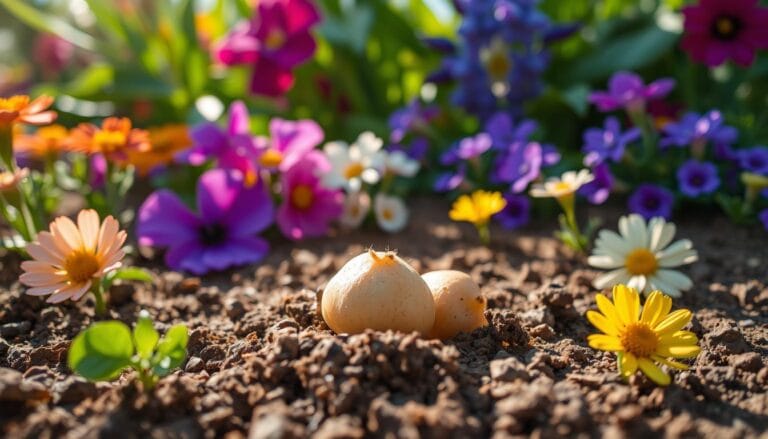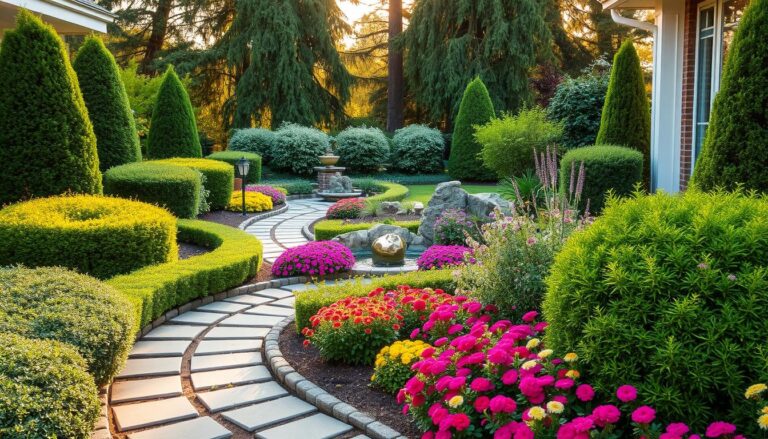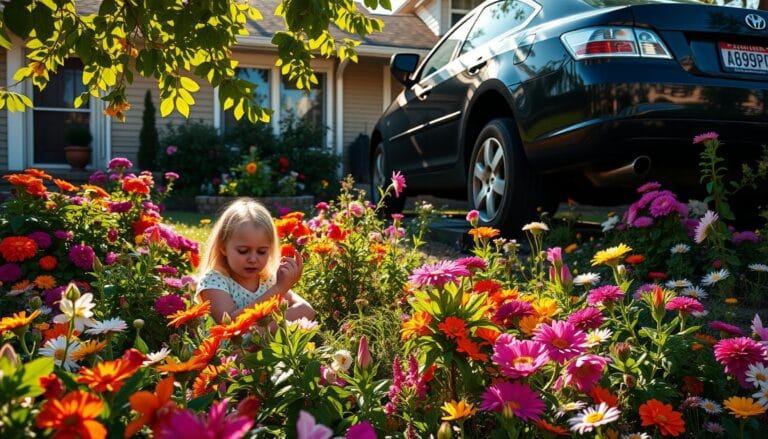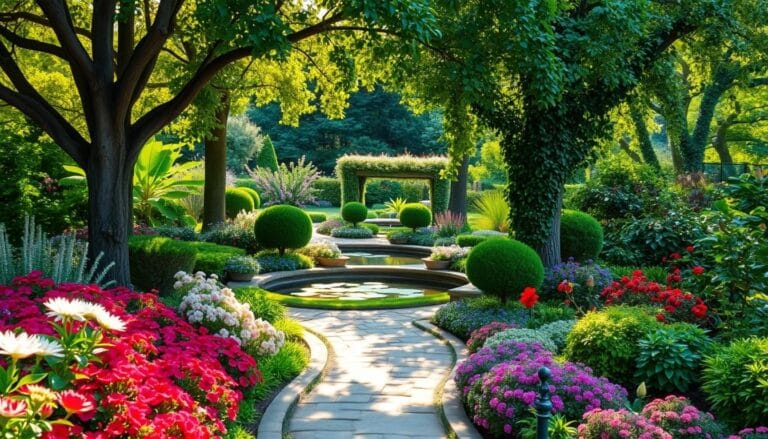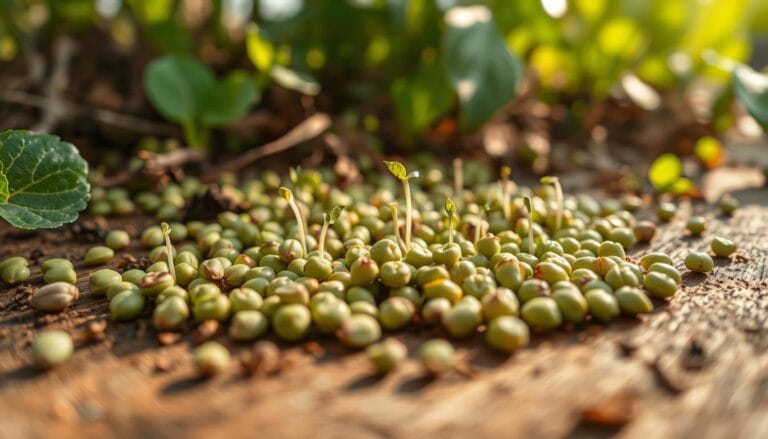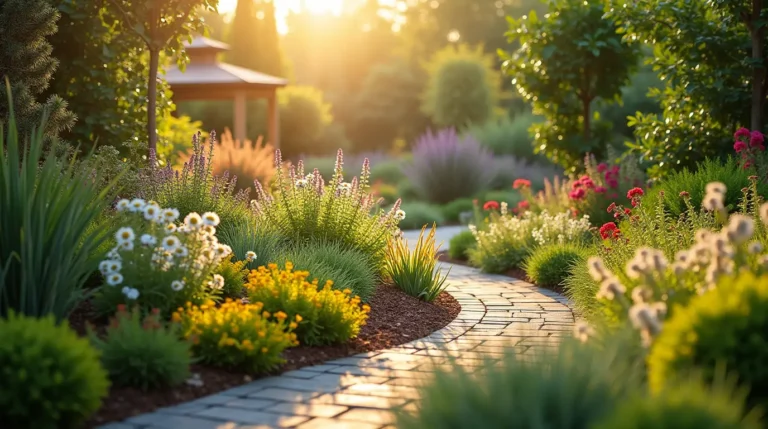Wildflower Seeds 101: Tips for a Colorful, Pollinator-Friendly Landscape
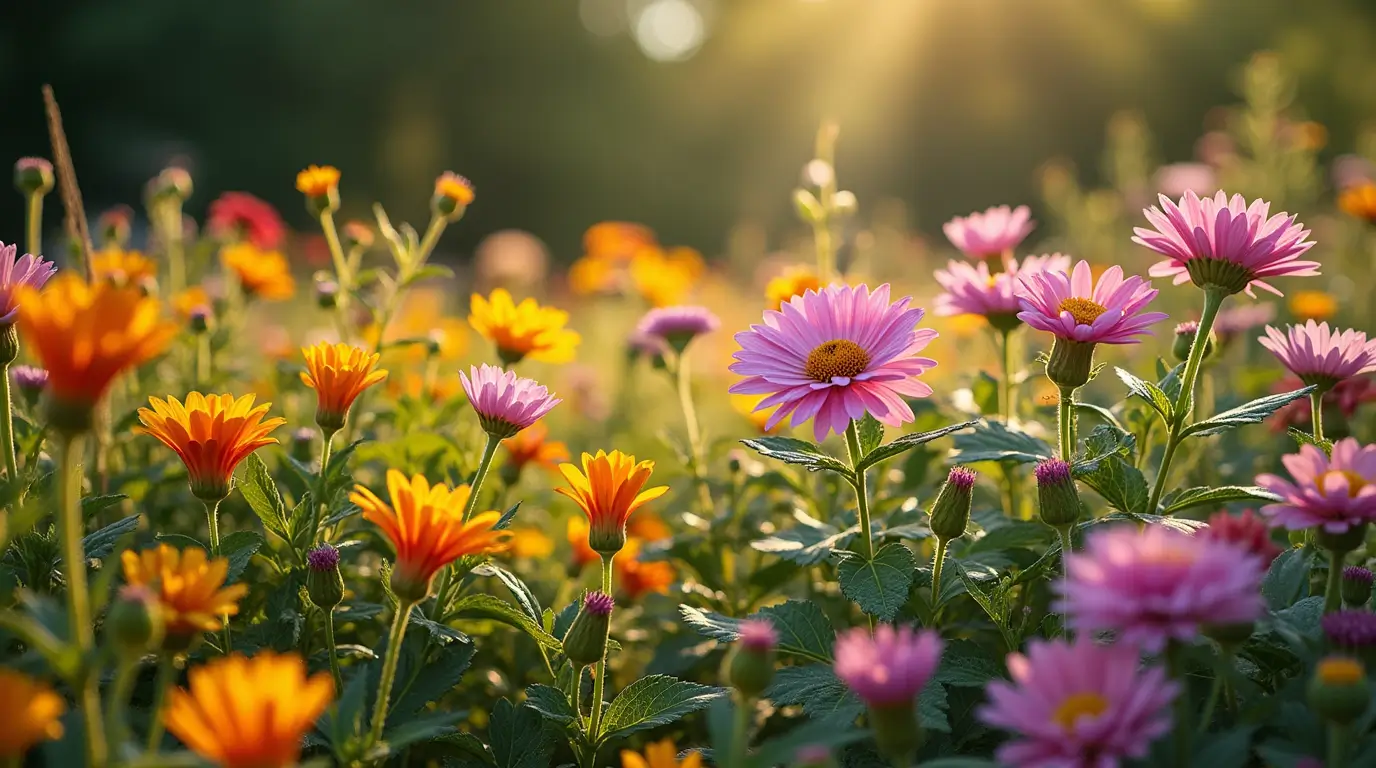
Introduction
As a garden enthusiast passionate about beautiful outdoor spaces, I’m excited to share a comprehensive review of Burpee’s bulk 25,000 wildflower seeds. This outstanding product has transformed my garden into a true haven for pollinators. If you value quality and attention to detail in your plantings, you will be delighted by the superior, non-GMO seeds that bring color and life to your outdoor area
Table of Contents
The Impact of Burpee Wildflower Seeds on Gardening
Burpee’s collection of 25,000 wildflower seeds, featuring 18 non-GMO varieties, is a dream come true for gardeners. Each variety has been selected to ensure vibrant colors, varied heights, and continuous blooming from spring through autumn.
Who Is This Seed Mix For?
This blend is ideal for:
- Beginner gardeners wanting to create a flourishing, inviting garden
- Experienced gardeners aiming to attract beneficial pollinators
- Environmentally conscious individuals who prefer non-GMO products
- Homeowners looking for a low-maintenance landscaping solution
- Nature photographers drawn to the diversity and beauty of wildflowers
Note: This mix contains mainly perennial wildflowers with a few annuals mixed in. It is not intended for those seeking a single variety or exclusively annual blooms.
Product Overview and Summary
Product Information
| Feature | Details |
|---|---|
| Product | Wildflower Seeds |
| Usage | Outdoor (garden) |
| Brand | Burpee |
| Features | Non-GMO, organic, heritage seeds |
| Blooming Season | From spring to autumn |
| Sun Exposure | Full sun |
| Quantity | 25,000 seeds |
| Package Dimensions | 8 x 10 x 2 inches |
| Weight | 8.1 ounces |
| USDA Zones | 4 through 10 |
| Customer Rating | 4.1 out of 5 stars |
In-Depth Review of Burpee Wildflower Seeds
Appearance and Design
The seed mix is presented in a professionally designed package featuring beautiful illustrations of the wildflowers you can grow. The resealable pouch ensures seed freshness and includes clear, illustrated planting instructions.
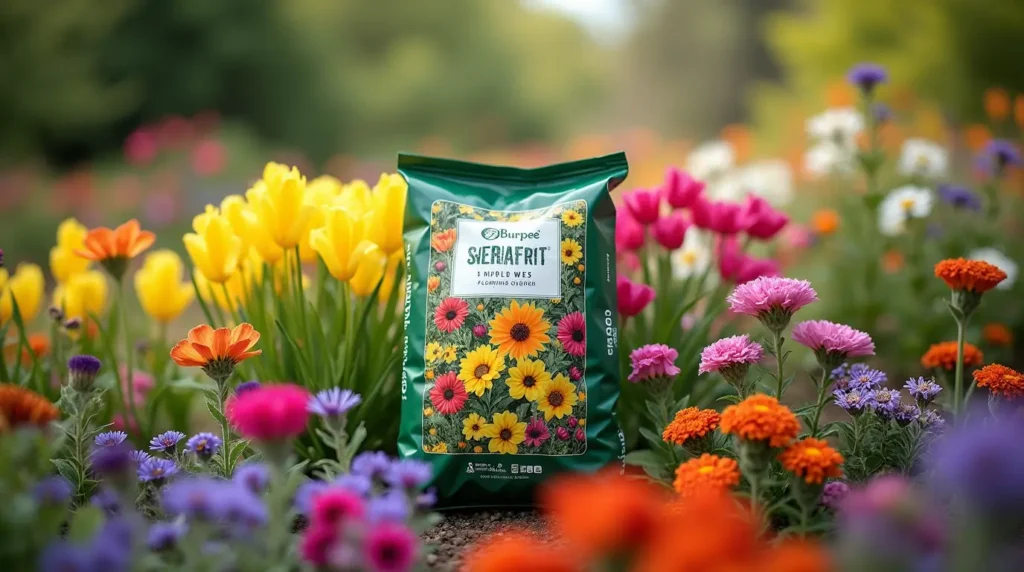
Performance and Characteristics
This mix features 18 varieties, including:
- Black-eyed Susan
- Purple Coneflower
- Baby’s Breath
- California Poppy
- Lance-leaved Coreopsis
- Flowering Cover
- Baby Blue Eyes
- Sweet Alyssum
- Cornflower
- Plains Coreopsis
- Shasta Daisy
- California Woodland Hyacinth
- Dwarf Annual Lupine
- Scarlet Flax
- Siberian Carnation
- Large Evening Primrose
- Mint Lemon
- New England Aster
This diversity guarantees an extended blooming period from spring to autumn and creates natural layers in the garden with heights ranging from 15 cm to 1.20 m.
Ease of Use
One of the key benefits of this wildflower mix is its simplicity:
- Clear the area of existing vegetation and loosen the soil.
- Distribute the seeds evenly over the prepared surface.
- Gently press the seeds into the soil without burying them too deeply.
- Keep the soil moist until germination, which can vary from 7 to 21 days.
Practical tips, including how to differentiate between seedlings and weeds, make this mix particularly accessible for beginners.
Durability and Quality
The seeds show a germination rate of over 90%, and the perennial varieties return year after year, with some even improving their coverage in subsequent seasons. Their cold resistance (surviving down to -20°F in zone 5) and ability to adapt to drought make them a durable choice for any garden.
Value for Money
Priced between $15 and $20, this mix covers up to 230 m², offering extremely competitive cost efficiency compared to purchasing individual seed packets or nursery plants. The longevity of the perennials further enhances its economic value.
Pros and Cons
Product Information
| Pros | Cons |
|---|---|
|
|
Alternatives and Comparisons
- Eden Brothers – Northeast Wildflower Mix ($22.95):
Specifically designed for cooler climates with 25 varieties, but covering a smaller area (about 93 m²). - American Meadows – Native Wildflower Mix ($19.99):
Exclusively focuses on native species with 12 varieties, ideal for eco-friendly gardeners.
Compared to these alternatives, the Burpee mix stands out for its value for money, diverse varieties, and wide availability both online and in garden centers.
Frequently Asked Questions
When Is the Best Time to Plant These Seeds?
The best times are early spring (after the last frost) or autumn (4 to 6 weeks before the first frost) when soil temperatures reach at least 13°C (55°F).
Should I Prepare the Soil Before Planting?
Yes, it is recommended to remove existing vegetation and loosen the top 2.5 to 5 cm of soil to ensure better seed-to-soil contact and promote germination.
How Long Before Blooming?
Some varieties bloom in 60 to 90 days, while others, particularly the perennials, may take until the second year to fully establish.
Are These Flowers Deer Resistant?
Certain varieties, such as the purple coneflower or rudbeckia, naturally exhibit some deer resistance, though no plant is entirely immune if food is scarce.
Can They Be Planted in Containers or Raised Beds?
Yes, these seeds can be planted in large containers (at least 30 cm deep) or raised beds, as long as good drainage is maintained.
Conclusion
Burpee has perfected its wildflower seed mix by offering 18 non-GMO varieties that ensure extended blooming and continuous visual appeal throughout the growing season. This product transforms large areas into inviting floral spaces for pollinators. Easy to plant, cost-effective, and durable, this wildflower seed mix is an excellent choice for gardeners of all levels.
There are no reviews yet. Be the first one to write one.

